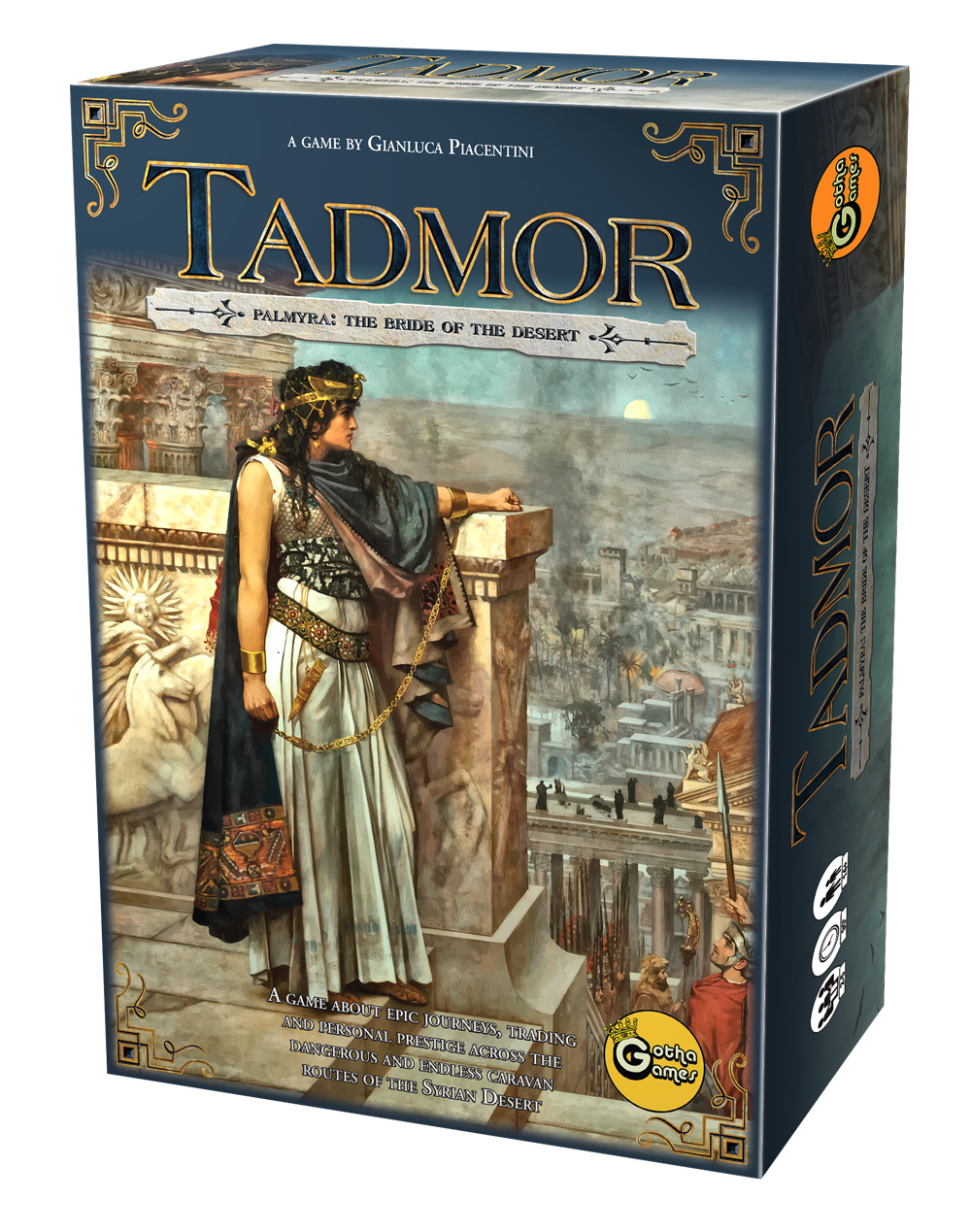Game Description
In Tadmor players take the role of rich merchants based in Palmyra.
They will increase in power and prestige by expanding their trading routes and by contributing to the political and religious life of the city.
In the game, a merchant's success is measured in Prestige Points. The winning merchant is the one who scores the most points at the end of the game.
Once dubbed "the Bride of the Desert", Palmyra (also known as Tadmor) was a vital stop for caravans crossing the Syrian Desert.
It was built on an oasis lying approximately halfway between the Mediterranean Sea in the west and the Euphrates River east, and thus helped connect the Western world with the Orient. The city began to attain prominence in the 3rd century BC, when a road through it became one of the main routes of east-west trade.
Palmyra was made part of the Roman province of Syria during the reign of Tiberius (14–37 AD). It steadily grew in importance as a trade route linking Persia, India, China, and the Roman Empire. In 129, Hadrian visited the city and was so impressed that he proclaimed it a free city and renamed it Palmyra Hadriana. In 217, Emperor Caracalla made Palmyra a colonia, which meant exemption from paying taxes to the empire. The 2nd and 3rd centuries were the golden age of Palmyra, when it flourished through its extensive trading and favoured status under the Romans.
The rise of the aggressive Sasanian Empire combined with the weakness of the Roman Empire forced the Palmyrene council's decision to elect Septimus Odaenathus as Lord for the city. Odaenathus stayed on the side of Rome, assumed the title of King and led the Palmyrene army against the Persians before they could cross the Euphrates to the eastern bank, inflicting upon them a considerable defeat.
In 266 Odaenathus and his eldest son were assassinated. Power fell to his infant son, but Odaenathus' wife, Zenobia, became the effective ruler.
Queen Zenobia was an effective ruler and her armies conquered most of Anatolia (Asia Minor). However, in reaction to Roman Emperor Aurelian's campaign in 272, Zenobia declared her son Emperor and assumed the title of Empress, effectively provoking Palmyra's secession from Rome. After heavy fighting; the queen was besieged in her capital and captured by Aurelian. She was sent to Rome, where she was paraded in golden chains as Emperor Aurelian's trophy. There are two stories of Zenobia's last days: she either lived comfortably in Rome in a villa provided for by the emperor or she starved or poisoned herself to death.
Aurelian spared the city and stationed a garrison of 600 archers, led by Sandarion, as a peacekeeping force. In 273 Palmyra rebelled under the leadership of Septimius Apsaios, declaring Antiochus (a relative of Zenobia) as Augustus. Aurelian marched again against Palmyra, this time razing it to the ground and seizing the most valuable monuments. Palmyrene buildings were smashed, residents massacred and the Temple of Bel pillaged. After these events, Palmyra was reduced to a village and it largely disappeared from historical records for the following 300 years.




